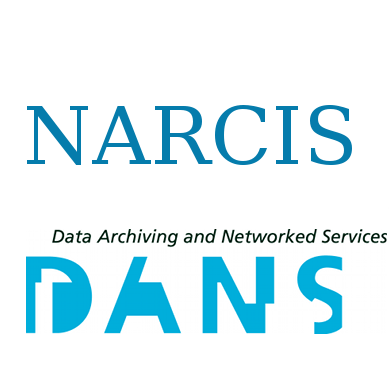Focal point
Location
National Academic Research and Collaborations Information System (NARCIS) is the main Dutch national portal for those looking for information about researchers and their work. NARCIS aggregates data from around 30 institutional repositories. Besides researchers, NARCIS is also used by students, journalists and people working in educational and government institutions as well as the business sector.
NARCIS provides access to scientific information, including (open access) publications from the repositories of all the Dutch universities, KNAW, NWO and a number of research institutes, datasets from some data archives as well as descriptions of research projects, researchers and research institutes.
This means that NARCIS cannot be used as an entry point to access complete overviews of publications of researchers (yet). However, there are more institutions that make all their scientific publications accessible via NARCIS. By doing so, it will become possible to create much more complete publication lists of researchers.
In 2004, the development of NARCIS started as a cooperation project of KNAW Research Information, NWO, VSNU and METIS, as part of the development of services within the DARE programme of SURFfoundation. This project resulted in the NARCIS portal, in which the DAREnet service was incorporated in January 2007. NARCIS has been part of DANS since 2011.
DANS - Data Archiving and Networked Services - is the Netherlands Institute for permanent access to digital research resources. DANS encourages researchers to make their digital research data and related outputs Findable, Accessible, Interoperable and Reusable.
Members:
Resources
Displaying 16 - 20 of 1863Multi-Functional Land Use Is Not Self-Evident for European Farmers: A Critical Review
Soils perform more functions than primary productivity. Examples of these functions are the recycling of nutrients, the regulation and purification of water, the regulation of the climate, and supporting biodiversity. These abilities are generally referred to as the soil quality. Soil management that favors primary productivity may have positive and negative impacts on the other functions, and vice versa, depending on soil and climatic conditions. All these functions are under pressure, particularly in intensive agriculture.
Feedback between drought and deforestation in the Amazon
Deforestation and drought are among the greatest environmental pressures on the Amazon rainforest, possibly destabilizing the forest-climate system. Deforestation in the Amazon reduces rainfall regionally, while this deforestation itself has been reported to be facilitated by droughts. Here we quantify the interactions between drought and deforestation spatially across the Amazon during the early 21st century.
Unpacking social learning in planning: who learns what from whom?
Social learning is the process of exchanging and developing knowledge (including skills and experiences) through human interaction. This key planning process needs to be better under-stood, given the increase and variety of non-planners influencing planning processes. This article explores who learns what from whom through social learning in planning. We unpack social learning theoretically to be able to map it, and employ empirically-based storytelling to discuss its relevance to planning practice.
Bridging the rural-urban dichotomy in land use science
Rural and urban areas are often conceptualized as two separate entities and studied accordingly. However, in reality, they are related in multiple ways. Here we explore this relation between rural and urban areas from a land use perspective. We argue that land should be characterized along a gradient from rural to urban. Further, we argue that land use along this gradient typically combines both rural and urban functions.
Between biodiversity conservation and sustainable forest management – A multidisciplinary assessment of the emblematic Białowieża Forest case
The tension between biodiversity conservation and multipurpose forest management may lead to conflicts. An internationally prominent example is the Białowieża Forest Massif (BFM), an extensive forest complex with high levels of naturalness. We apply a systematic, multidisciplinary assessment process to review empirical evidence on different dimensions of the BFM conflict.


